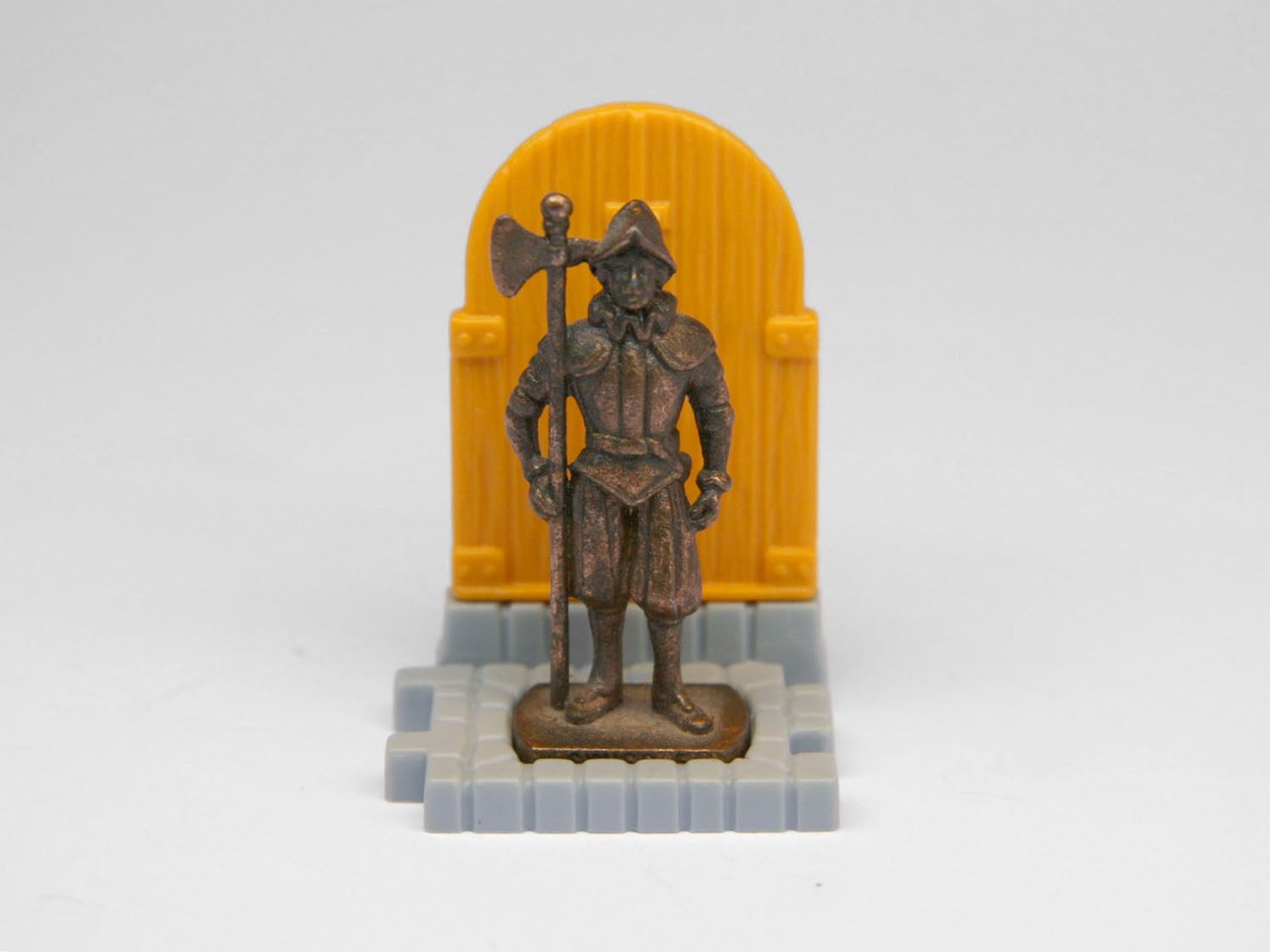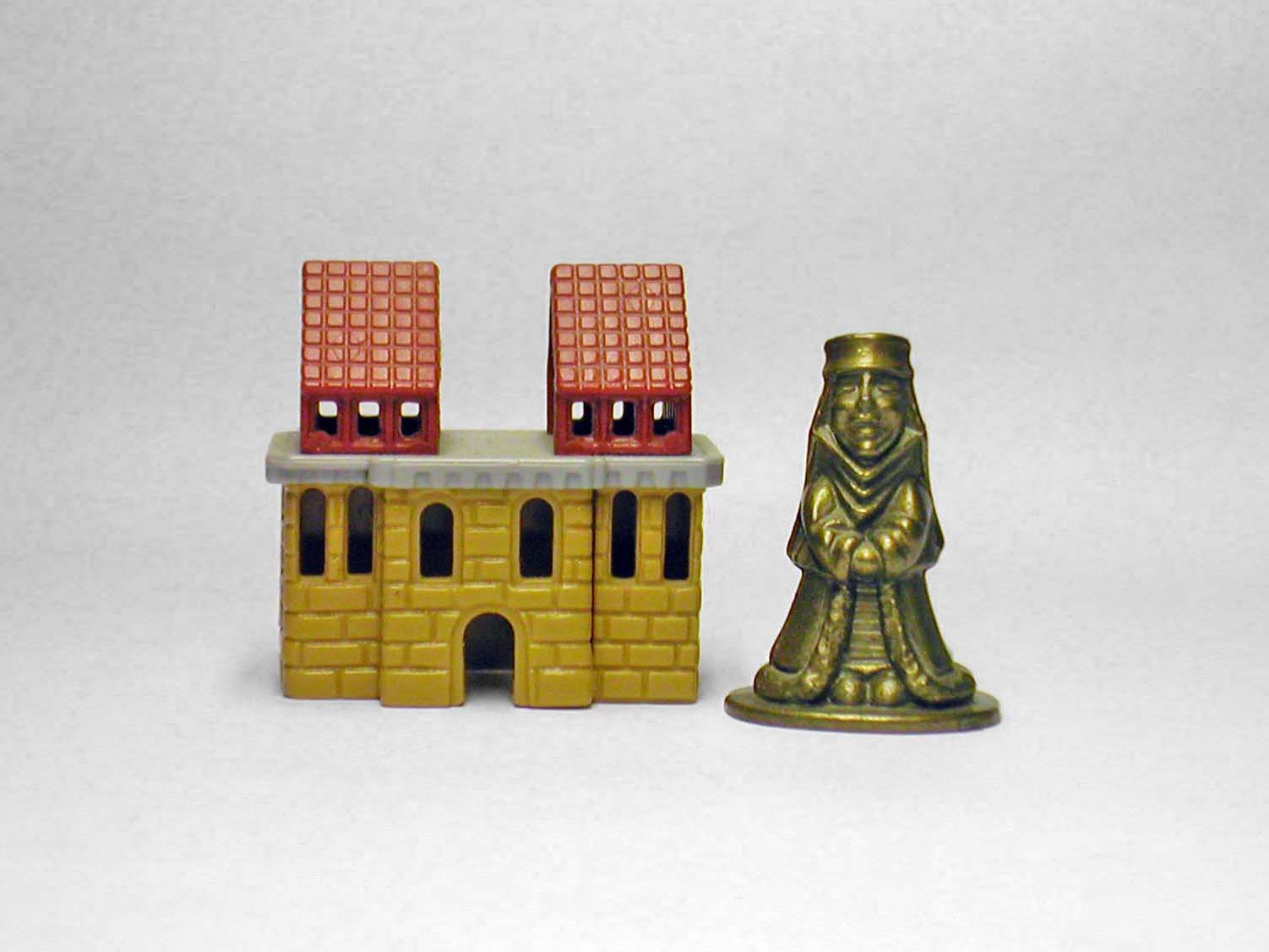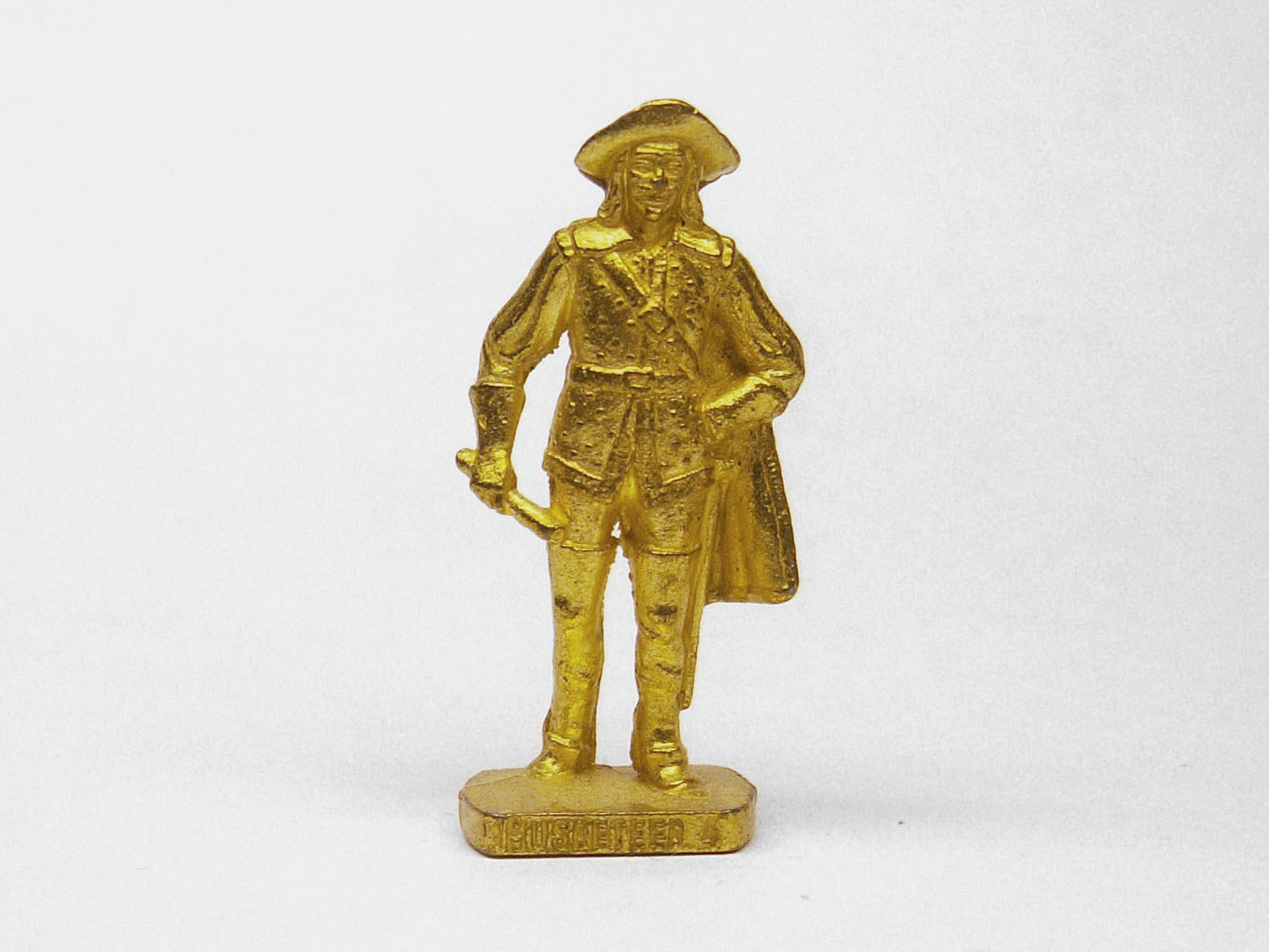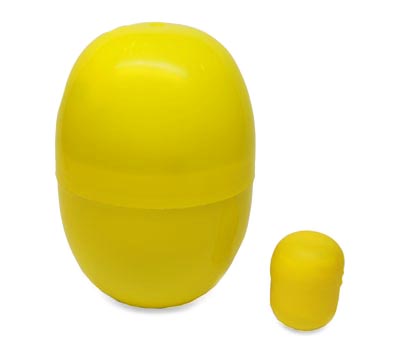T
he History of
Kinder
Surprise
Kinder Surprise (Kinder Überraschung or Kinder Sorpresa), also known as a Kinder Egg, (Kinder being the German word for "Children"), is a confection originally intended for children in the form of a chocolate egg containing a small toy, often requiring assembly.
Kinder Surprise originated in 1972 in Italy. The manufacturer is Ferrero. The toys are designed by both inside designers and external freelancers, for example the French artist André Roche based in Munich, and manufactured by many companies worldwide such as Produzioni Editoriali Aprile, a small company based in Turin, Italy, run and founded by two brothers, Ruggero and Valerio Aprile.
Kinder Surprise (Kinder Überraschung or Kinder Sorpresa), also known as a Kinder Egg, (Kinder being the German word for "Children"), is a confection originally intended for children in the form of a chocolate egg containing a small toy, often requiring assembly.
Kinder Surprise originated in 1972 in Italy. The manufacturer is Ferrero. The toys are designed by both inside designers and external freelancers, for example the French artist André Roche based in Munich, and manufactured by many companies worldwide such as Produzioni Editoriali Aprile, a small company based in Turin, Italy, run and founded by two brothers, Ruggero and Valerio Aprile.
Prohibited in the United States
Kinder Eggs containing toys are not suitable for children under the
age of three due to the small parts which may be ingested or
inhaled. They are sold all over the world excluding the United
States, where the 1938 Federal Food, Drug and Cosmetic Act,
prohibits embedding "non-nutritive items" in confections.
Additionally, the Consumer Product Safety Commission issued a recall
on the eggs in 1997. Kinder Egg-like confections are available, but
only in a form filled with small candies and/or stickers. There are
some stores in the United States that sell genuine Kinder Eggs,
often in conjunction with other imported British or other European
sweets, although their importation is technically illegal due to the
1938 law and 1997 recall.

Click picture for larger size.
Warning Text
Every Kinder Surprise toy is accompanied by a text warning the
buyer of the potential hazard for small children.The paper reads: "Warning, read and keep: Toy not suitable for children under 3 years. Small parts might be swallowed or inhaled."
Popularity and Collectors
In Europe, their popularity has spread beyond their intended
market, and they have become a minor cult phenomenon among
discerning adults. There is even a thriving collector's market for
the toys. This is especially true in Germany, where the manufacturer
includes higher-quality toys than those available elsewhere (more
details below). There are many types of toys available, but some of
the most popular with collectors include the ever-changing series of
small handpainted figures (some have to be assembled), which are
said to be in every seventh egg (ad slogan: "Jetzt in jedem
siebten Ei"); cartoon characters (sometimes called "stick
figures", which is a mistranslation of the German
"Steckfiguren"); metal figures and jigsaw puzzles.
Seasonal eggs are introduced around the holidays, such as the
limited-edition creche collections (featuring such characters as the
three kings, baby Jesus, and assorted barnyard animals) found around
Christmas, and the huge ones found at Easter (extremely popular in
Italy).
The Magic Code
A relatively short-lived innovation, triggered by the advent of the
Internet, is the introduction of 'Internet surprises'.
Accompanying the toy is a small slip of paper containing a
'Magicode'. This code gives access to games at the Magic Kinder
website, some for downloading, some for playing online.The magic code paper was short-lived and lasted only a few years. Nowadays the Kinder Surprise website instead offers a QR-code that leads to lots of interaction, fun and games for everyone visiting the site.

Collecting Kinder Surprise toys
There are a number of different approaches that can be taken to
collecting Kinder Surprise toys. It is important to realize that not
just the toys are collectable, but also the instruction papers
(which many Kinder Surprise collectors refer to by their German
abbreviation of BPZ, which stands for Beipackzettel). Some novice
collectors make the mistake of discarding the instruction papers.
Consequently, "BPZs" tend to be rarer than the toys, which
makes them more valuable to collectors. Other objects associated with Kinder Surprises (such as promotional posters, sales display boxes, and dioramas) are also frequently sought after.
As with any collectable, it is possible to be "completist", and attempt to collect every toy and paper ever made anywhere in the world, as well as any other Kinder-related items.
However, most collectors prefer to specialize in a particular area, such as handpainted figurines, metal figurines or jigsaws. Some collectors even choose to only collect Kinder-related advertising and promotional material. Before deciding on what and how to collect however, it is important to have a basic understanding of the main types of Kinder toys and how to classify and identify them. This is covered in the section below.
Classification and identification
Classifying and identifying Kinder Surprise toys is a rather
complex exercise. There are several different lines, and a number of
different numbering systems have been used over the years. Until the
1990s, the toys were seldom numbered at all, which can make
identification difficult (although some early toys, especially
handpainted figurines, have a Ferrero mark). Kinder history can be
broadly split into two periods: pre-2004 and post-2004. The pre-2004
toys were made by Ferrero. But in 2004, a Luxembourg-based company
called MPG (which stands for Magic Production Group) took over toy
production, although Ferrero continues to make Kinder Surprise
chocolate. Prior to 2004, but after 1990, three distinct lines
emerge:Pre-2004: German line
The German line of Kinder Surprise toys was sold only in Germany
before 1997, and in Germany and Austria after 1997. In general, this
line is regarded by Kinder aficionados as being superior in quality
to other lines. The instruction papers for German toys are quite
large and usually contain the name of the series on one side, and
frequently, the name of the toy on the other side, which also has
the assembly instructions. In addition, each German paper has a
six-digit number that is unique to the specific toy. The toys
themselves do not have these numbers, but almost always have a
Ferrero mark. There does not appear to be any particular pattern to
the German numbering system, but the first three digits are always
either 6xx or 7xx.
Examples of Kinder Surprise from Germany pre 2004.
Pre-2004: West European line
Until the early 2000s, this line (made by Ferrero Italy) was sold
and distributed in all countries except Germany, Austria, and
countries where Kinder Surprise eggs are illegal (such as the USA)
or simply not available. From about 2001 however, it was restricted
mainly to Western Europe, Japan, and Hong Kong. The main
distinguishing feature of this line is the use of "K
numbers" (e.g. K96 No. 1), which are found on both the toys and
instruction papers. The two digits after the K represent the year of
issue, while the subsequent number is the number of the specific
toy. So K96 No. 1, for instance, would be toy No. 1 in the series
issued in 1996. Toys with "K numbers" are sometimes
referred to as "K toys". The toys tend to be less
sophisticated than the ones in the German line. The papers are also
a great deal more basic. They are essentially elongated strips that
show the toys in the set on one side and have assembly instructions
for the specific toy on the other. Unlike the German papers, they
almost never have any writing on them. The "K" papers were
accompanied by a separate white strip of paper with a standard
safety warning in many languages. The first known "K"
series was K91, while the last was K04, after which MPG introduced a
brand-new numbering system.In recent years, there have also been reproductions of older K toys, which Kinder collectors frequently refer to as "recasts". These "recasts" first appeared in Poland, but soon spread to other Eastern European countries and eventually to Canada, Mexico, South America, Australia, and New Zealand. They have very similar papers to the original releases, but the numbering is slightly different. For example, a "recast" of K93 No. 81 is simply numbered "No. 81". Both the toys and papers have this altered numbering. Recasts are not very popular with collectors, but they are nevertheless sought after by completists.
Pre-2004: Argentine/Brazilian line
This line only began in the earliest years of the 21st Century
after Ferrero Argentina became a much bigger player on the Kinder
Surprise scene. "Argentine" toys, as they are generally
known, are basically K toys, but with some significant differences
from their West European counterparts. The Argentine line is
distributed in South America, Mexico, Canada, Australia, and New
Zealand. It is also sold in Brazil, but Brazilian papers are
different from the standard Argentine versions (see below). Although
the "Argentine" line mostly resembles the West European
line, there are often differences in how the toys are made. For
instance, where a West European animal or character toy would have
the eyes painted on, the Argentine equivalent would have eye
stickers. Some Argentine toys have even been exclusive and never
released in the West European line. For example, the jigsaw puzzle
numbered K01 No. 122 was only ever released in the Argentine line
and never issued in the West European line. It is consequently quite
highly sought-after by European Kinder Surprise collectors. In more
recent years, a series of jigsaw puzzles based on the Monster Hotel
handpainted series was also exclusive to the Argentine line.Up to 2004, Argentine papers showed the toy series and assembly instructions on the same side, while the opposite side contained the multi-lingual safety warning that is printed on an entirely separate paper in the West European line. Initially, the papers were of rather poor quality and tore easily, but from the K02 series onwards, they were thickened up a bit, although they were still rather less robust than their European counterparts.
Post-2004: European MPG line
After MPG took over the production of Kinder Surprise toys, the
German and European lines were merged so that the same toys were now
distributed in all European countries. The numbering system was
changed, as were the toys and papers. Instead of a "K"
number or six-digit number, all toys now had a new type of number.
In the first MPG year, toys were numbered C-x (e.g. C-1, C-2 etc.).
In the second MPG season, the C was replaced by an S (so toys were
now numbered S-1, S-2 and so forth). In the third and current season
of MPG toys, S has been replaced by 2S (2S-1, 2S-2 etc.). The papers
were made somewhat larger. The toys had the new numbering and an MPG
mark instead of a Ferrero one.But although the toy lines were merged, the papers have retained some significant regional differences. German papers still contain the series name, and often the toy name, in German. West European papers have no writing, but do contain a Magicode logo. East European papers are much the same as West European papers, but have no Magicode logo.






Examples of the first MPG produced figures.
Post-2004: Argentine/Brazilian MPG line
Notwithstanding the merger of the German and European lines, there
continues to be a separate Argentine line. MPG toys are included in
this line, but sometimes have differences to their European
counterparts, most notably in their stickers and the papers. The new
Argentine papers are much bigger than before. In fact, they are the
same size as the European papers. On one side, they show the toys in
the series. The reverse side has two distinct parts: the assembly
instructions (across the top) and the multi-lingual safety warning
(bottom half). The Brazilian papers are much the same, but the
safety warning section is yellow rather than white. Interestingly,
some "K" toys (mainly from the K04 series, but also a set
of speedboats from the K01 series) have been released in the
Argentine/Brazilian line with MPG-style larger papers. Another
curious feature of the Argentine line has been the release of a
small number of "recasts" of old German toys. The papers
are in the original Argentine pre-2004 style, but have the German
six-digit numbers. The toys are much the same as the German
originals, but in some cases, the colors have been changed.
Limited editions
In addition to the regular collectable toys, Kinder Surprise series
generally contain special limited-edition sets. These sets tend to
vary greatly between countries, with many variations in toys, but
more especially papers, which tend to be unique to the specific
countries in which the sets are released. Some sets are released in
many countries, while others are only issued in one or two. A few
types of limited editions are discussed below.
Handpainted figurines
handpainted figurines are solid toys that generally don't require
assembly. They are very popular with collectors. They can be broadly
divided into two types: animal themes and cartoon characters. One of
the earliest known handpainted sets is the
Super-Mini-Schlumpf-Parade (Super Mini Smurf Parade), issued in
Germany in 1983. handpainted sets issued prior to 1990 tend to be
very highly sought-after, especially if, as in the case with the
Smurfs, other collector groups are also interested. The earliest
sets were released only in Germany, but after about 1993, they were
released in many different countries, with papers unique to those
countries. Even so, a small number of sets were only released in
Germany, while others (like the 1994 Panda Party) were issued in
several European countries but not Germany. It is fair to say that
some sets have seen wider distribution than others. Until the advent
of the MPG era, handpainted sets were not numbered. However, MPG
limited-edition sets have MPG numbers on both the toys and
papers.





Examples of handpainted figurines.
"Steckfiguren"
The toys known in Germany as "Steckfiguren" are based
primarily on cartoon characters. Some English-speaking collectors
call them "stick figures", but this is not really a
correct translation. A more accurate translation would be something
like "put-together figurines" or "snap-together
figurines". So unlike handpainted figurines, they are
not solid, but have a softer plastic and need to be assembled. As with handpainted figurines
however, they were originally issued in Germany only. In the
European and Argentine lines, they were assigned K-numbers, but tend
to be harder to find than other K-toys and can command a
similar premium to handpainted figurines. This is especially true
of the early German releases, which were usually based on Disney
characters like Mickey Mouse and Donald Duck. Hanna-Barbera
characters like The Flintstones and Yogi Bear tended to feature in
the "K" series, although there were also two Peanuts sets
(in the K94 and K00 series) and two Smurfs sets (in the K97 and K02
series).


Some of the popular "Steckfiguren".
Metal figures
There have been many sets of metal figures - mainly soldiers -
issued since about 1980. Most of these were put out in Germany, but
some found their way to the West European line, where they were
assigned "K" numbers. The last known metal figure set in
the "K" line was a set of medieval figures released in the
K98 series. There have been no metal figures issued since MPG took
over the manufacture of Kinder Surprise toys.




Some of the popular metal figures.
Other Kinder Surprise eggs types
In addition to the main line of Kinder eggs, there are a couple of
sub-types worthy of mention:
Kinder Joy
Kinder Joy eggs are released during the hottest part of the
summer in Europe. Though the toys are the same as the toys that
are currently in the Kinder Surprise eggs, the Kinder Joy eggs are
very different. The cover of the egg is plastic, and to open it
you cut it in half. One half of the egg has the toy, and the other
half has a hazelnut cream with two crunchy chocolate balls in
it.
 Kinder Joy packets from Greece 2008.
Kinder Joy packets from Greece 2008.
Maxi eggs
Maxi toys can be found in giant-sized Kinder eggs known as
"Maxi eggs". They are much bigger than regular-sized
toys.
 Size difference between a Maxi egg and a regular-sized one.
Size difference between a Maxi egg and a regular-sized one.
Text taken from Wikipedia, Free Encyclopedia on the internet.
Link:
http://en.wikipedia.org/wiki/Kinder_Surprise
www.wikipedia.org